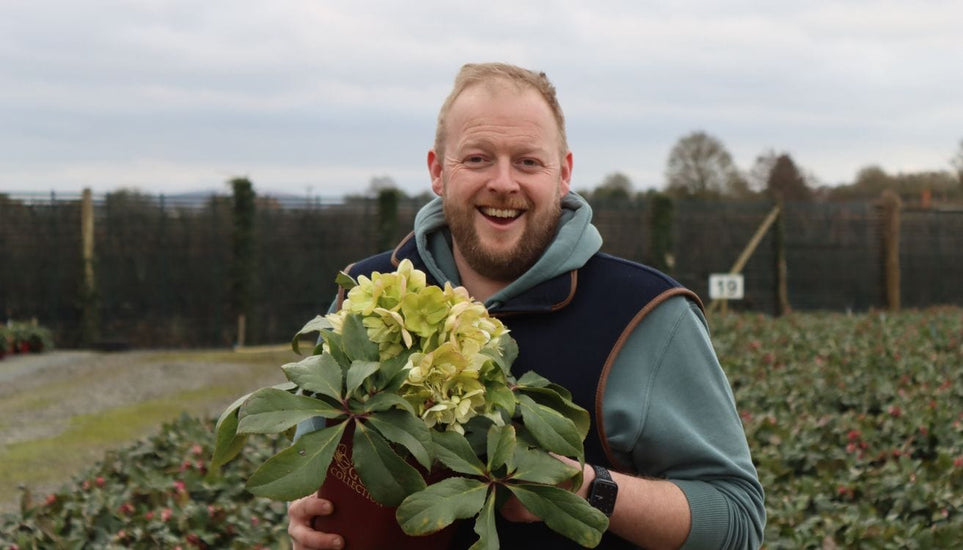Hollyhock Plants
You wanted tall? How about 2m of strong, leafy stems exploding with rows of supersized flowers in pastels, brights or dark colour tones from June to September? Hollyhocks are the cottage garden plant with the wow factor and since they’re rich in nectar and pollen, the bees and butterflies will be just as impressed as the neighbours. Grow plenty and fill your vases, too. Ours are sustainably grown by Jack in Herefordshire with recycled rainwater and natural pest control, so they’ll raise your garden to new heights year after year.
Need help picking?Sort and filter
Hereford
Meet Jack
Perennials born in Herefordshire, blooming in your garden
Our perennials start life in the rolling Herefordshire hills, where Jack and his team trial over 250 new varieties each year to bring you the best performing and most sustainable plants in the UK. With over forty years of excellence, it’s no surprise that they’ve won the HTA Plant Grower of the Year award two years running.
Need help picking?
Hollyhocks FAQs
When is the best time to plant hollyhocks in the UK?
Hollyhocks are best planted in early spring or late autumn in the UK, to allow for a long growing season before any extreme temperatures in summer or winter.
What kind of soil do hollyhocks prefer?
Hollyhocks prefer fertile, well-draining soil which is slightly alkaline, but they tend to thrive in most soils.
How much sunlight do hollyhocks need?
Plant your hollyhocks in a sunny, sheltered location where they’ll get around 6-8 hours of sunlight daily, and will be protected from wind.
How often should I water hollyhocks?
Water your hollyhocks deeply a couple of times a week, to keep their soil consistently moist but not waterlogged.
Do hollyhocks need support as they grow?
Hollyhocks can grow to 2m tall, so although their stems are strong, they will benefit from some support to stop them being blown over. You can use stakes or plant them next to a fence, wall or tree to provide natural support.
When do hollyhocks bloom?
Hollyhocks are summer blooming plants, usually starting to flower in June or July and often carrying on right into August or September.
How do I deadhead hollyhocks?
As your hollyhock’s flowers fade, you can cut them off with scissors or shears, and this will encourage the plant to produce more. It also helps to stop your plant self-seeding everywhere!
Can I grow hollyhocks in containers?
Hollyhocks are usually grown in the ground, but there’s no reason they shouldn’t thrive in containers, so long as these are large, deep (hollyhocks have long taproots) and have proper support.








